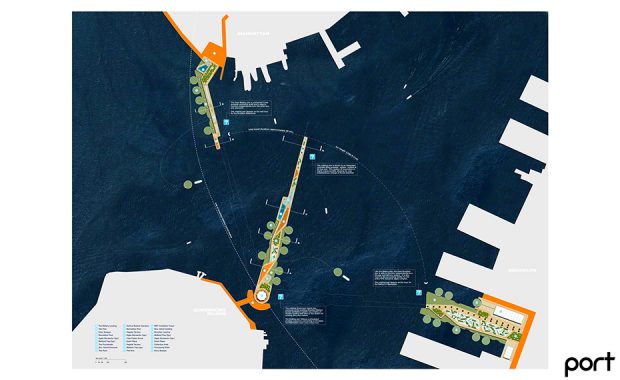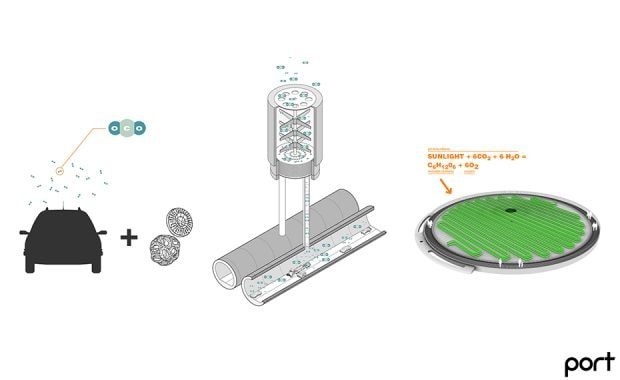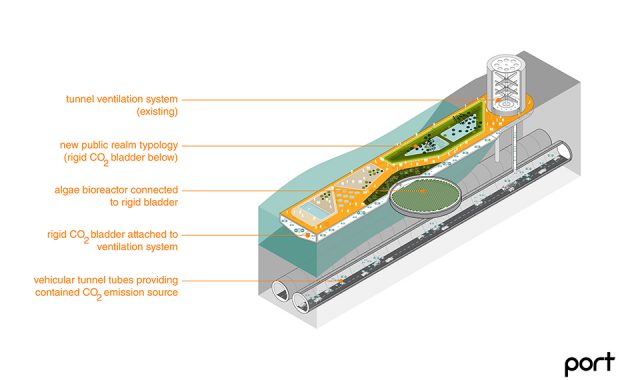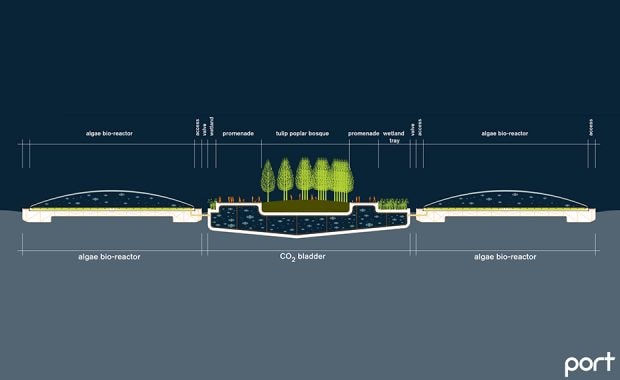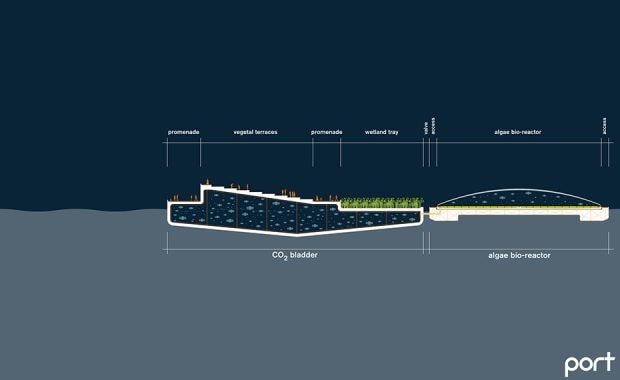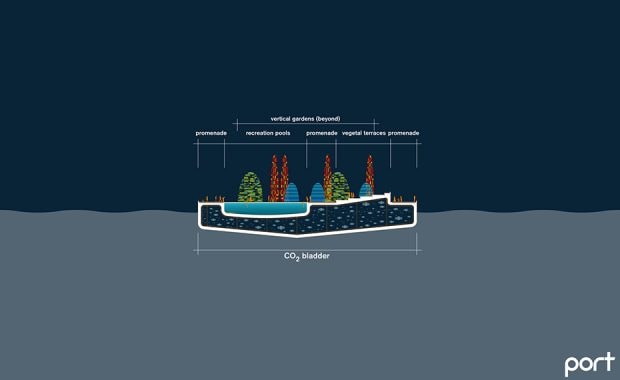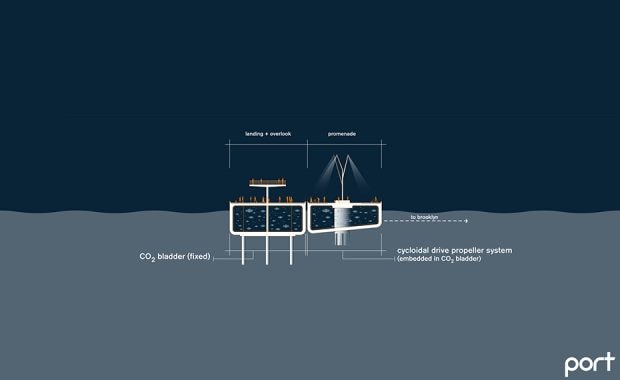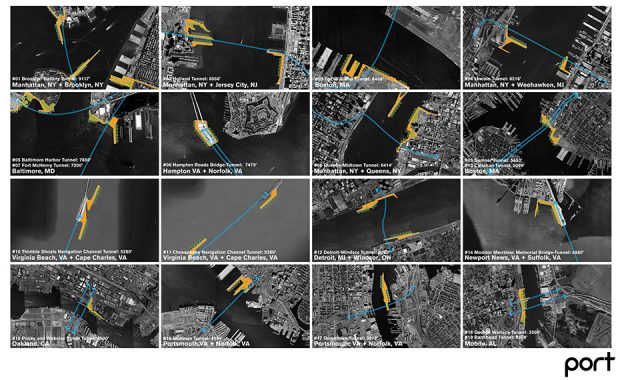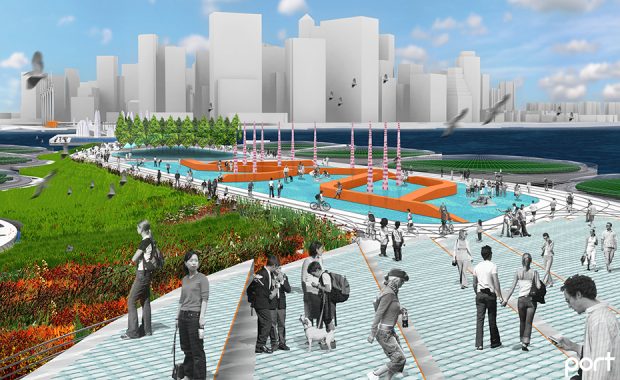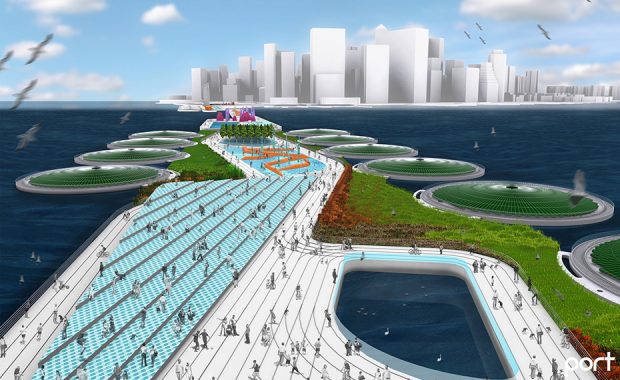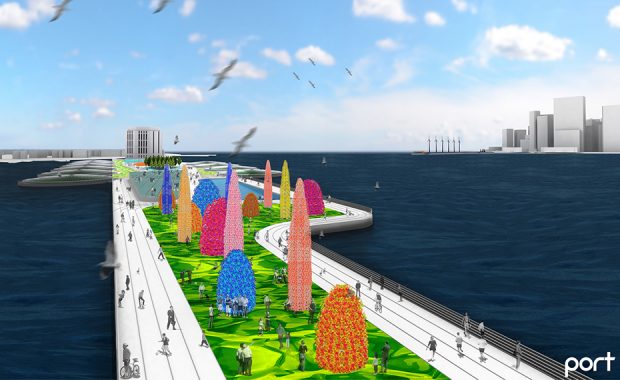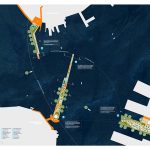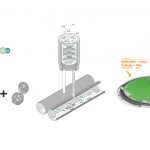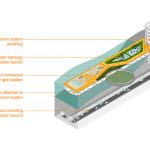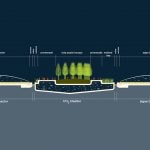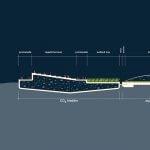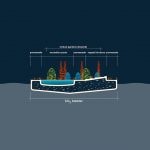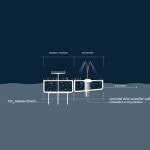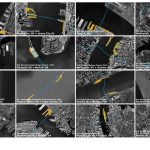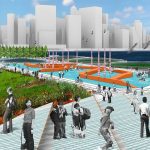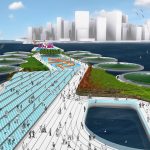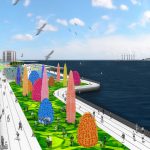Project: Carbon T.A.P. (Tunnel Algae Park)
Location: Philadelphia, PA
Firm: PORT Urbanism
Year: 2009
Competition: Winning Entry, UCLA/CityLAB WPA 2.0 Design Competition
Website: http://porturbanism.com/work/carbon-t-a-p/
Project Description: As Federal, state and local governments undertake consideration of large-scale investments in the renovation and replacement of urban infrastructures, we see a unique opportunity to reconsider the role of these systemic networks and their effect on our contemporary urban landscapes.
In the scenario outlined herein, a new type of ‘green’ infrastructure is deployed at urban locations comprising concentrated sources of CO2 production. This new infrastructure utilizes a proprietary system of industrial scale algal agriculture to sequester and consume greenhouse gas emissions in order to limit their introduction into the atmosphere, while simultaneously creating a new economic resource through the production of oxygen, biofuels, bioplastics, nutraceuticals and/or agricultural feeds. In the scenario shown above, this new infrastructure manifests itself as a series of pier-like armatures linked to the ventilation system for the Brooklyn-Battery tunnel.
What is unique about this proposition is not just the introduction of large-scale urban green infrastructure, but rather the use of infrastructural armatures to create an exceptional public realm amenity for the city. Rather than considering urban infrastructures as a necessary evil to be hidden or mitigated, we view the renovation and re-imagination of these systems as opportunities to create new forms of civic and social domain that have the capacity to positively transform the American urban landscape.
Our proposal for a new infrastructural typology is one part climate action; one part agricultural production; one part ecological preserve; one part public realm; and one part economic catalyst represents what should be the aspiration for all newly deployed urban infrastructures—the ability to fundamentally improve the economic and social quality of a city, as well as the associated lives of its current and future residents.
| previous project | next project |
